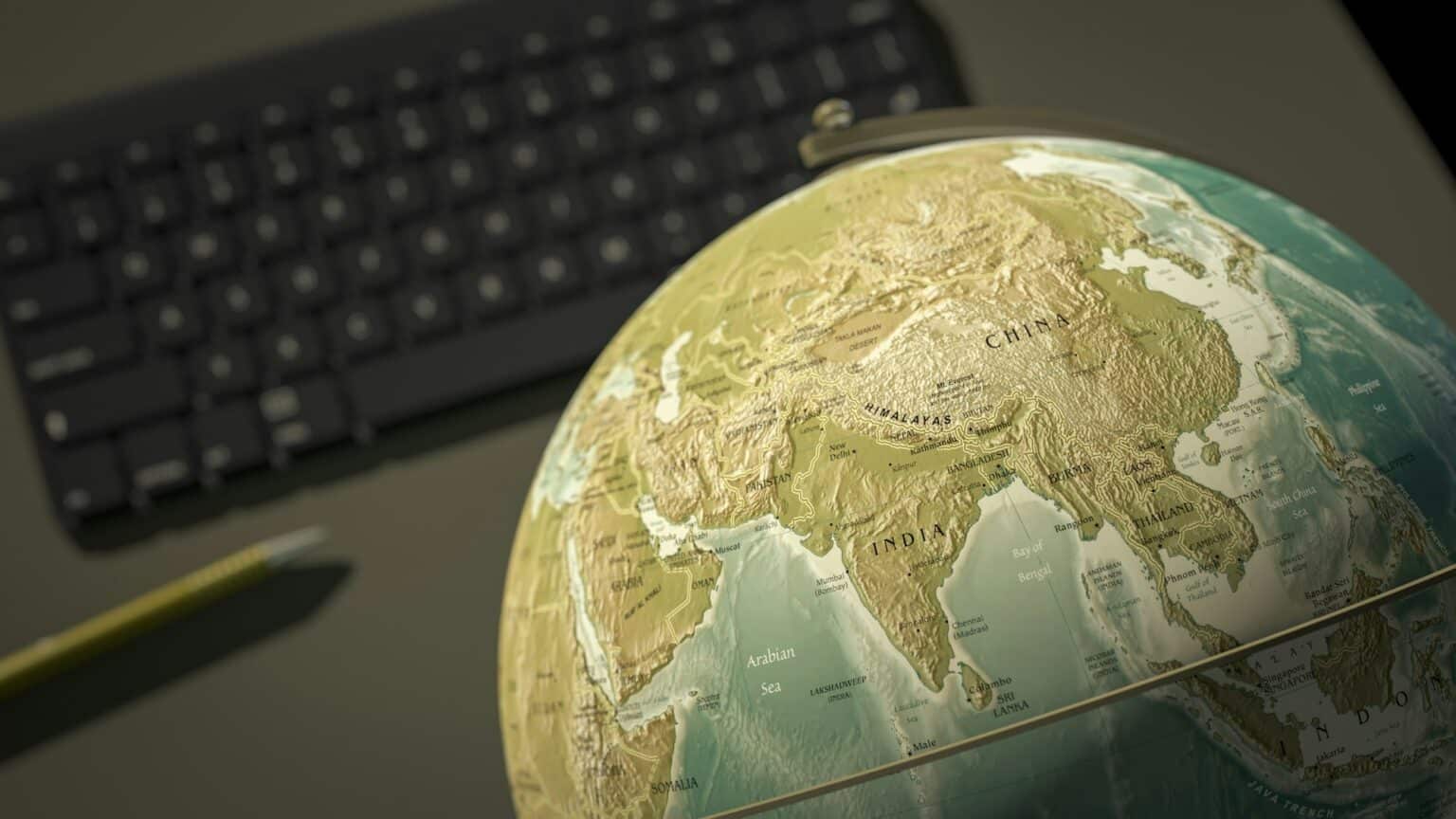Introduction to the Internet
The Internet is one of mankind’s most revolutionary inventions, which has fundamentally changed access to information, communication and entertainment. But how does the internet actually work? In this article, we take a comprehensive look at how the internet works, from its basic components to its role in the modern world.
The history of the Internet
The origins of the internet can be traced back to the 1960s, when ARPANET, the predecessor system to the internet, was developed. It was originally designed as a military communications network that would remain functional even in the event of a nuclear war. In the 1980s, ARPANET began to connect to other networks, which ultimately led to the creation of the Internet as we know it today.
The birth of the World Wide Web
The World Wide Web (WWW) was developed by Tim Berners-Lee in 1989 and was a simple way of making information accessible on the Internet. It made it possible to link documents via hyperlinks and thus created the basis for today’s web browsing.
Basic functioning of the Internet
The Internet consists of a multitude of interconnected networks that exchange information in the form of data packets. These networks can include anything from small home networks to huge global networks connecting millions of devices.
Data transmission: From computers to servers
The basic functioning of the Internet is based on the transfer of data between computers and servers. Every time a user visits a website or sends an email, data is sent over the network in small packets. These packets not only contain the actual data, but also information about the sender, the recipient and the route they are to take.
Packages and protocols
Data is split into small packets that are sent independently of each other over the network. These packets use protocols such as the Transmission Control Protocol (TCP) and the Internet Protocol (IP) to ensure that the data is transmitted and reassembled correctly.
IP addresses and DNS
Every device on the internet has a unique IP address that identifies it. The Domain Name System (DNS) is used to convert human-readable domain names such as www.beispiel.com into IP addresses that can be used by computers.
The role of networks
The internet is a network of networks. These networks vary in size and complexity, but all play a crucial role in the transmission of data.
Local area networks (LAN)
A local area network (LAN) connects computers within a limited geographical area, such as a home or office. LANs are usually private and allow devices to exchange data quickly and efficiently.
Wide area networks (WAN)
A wide area network (WAN) extends over large distances and connects several LANs with each other. The largest WAN in the world is the Internet itself, which connects networks all over the world.
How networks are connected
Networks are interconnected via a variety of technologies, including fiber optic cables, copper cables and wireless connections. These connections allow data to be transmitted over long distances at high speed.
Routers and switches
Routers and switches are crucial devices that route data packets through the network. While a switch works within a network and sends data to the right device, a router connects different networks and routes packets on their way through the internet.
Network cable and wireless communication
Data is transmitted via physical cables such as Ethernet cables or wirelessly via radio waves. Both methods have their own advantages and disadvantages, but both are essential for the functioning of the Internet.
The interaction of the protocols
The transmission of data on the Internet follows a strict set of rules known as protocols. These protocols work together to ensure that data is transmitted reliably and securely.
Transmission Control Protocol (TCP)
The Transmission Control Protocol (TCP) is a fundamental protocol that ensures the reliable transmission of data. It ensures that packets arrive in the correct order and that no data is lost.
Internet Protocol (IP)
The Internet Protocol (IP) is responsible for ensuring that data packets reach their destination. It divides each packet into smaller parts and ensures that they are assembled correctly.
HTTP, HTTPS and other application protocols
HTTP (Hypertext Transfer Protocol) and HTTPS (Hypertext Transfer Protocol Secure) are the protocols used for loading websites. While HTTP is unencrypted, HTTPS offers secure transmission that protects against eavesdropping and manipulation.
The interaction of the protocols
TCP, IP and other protocols work together to enable data transmission on the Internet. This interaction ensures that data is transmitted quickly, securely and reliably.
How web browsing works
Web browsing is one of the most common activities on the Internet. But what actually happens when you visit a website?
The path of a request
When you enter a URL in your browser, your computer sends a request to the web server hosting the website. This request is sent over the network and answered by the server, which sends back the requested data.
From the URL to the IP address: DNS resolution
Before the request can be sent, the URL must be converted into an IP address. This is done by the Domain Name System (DNS), which manages a list of domain names and their corresponding IP addresses.
The role of the web server
The web server is a computer that hosts a website and responds to requests from users. It sends the requested data, such as HTML files, images and scripts, back to the browser, which then displays them.
Loading websites: HTML, CSS and JavaScript
Websites consist of HTML, CSS and JavaScript. HTML forms the structure of the page, CSS provides the design, and JavaScript adds interactive elements. These files are downloaded and interpreted by the browser to display the website.
The Internet of Things (IoT)
The internet is not just limited to computers and smartphones. With the Internet of Things (IoT), everyday devices such as fridges, thermostats and cars are also connected to the internet.
Connections beyond the computer
The IoT extends the reach of the internet to devices that were previously not connected. These devices communicate with each other and with users to perform a variety of tasks.
Smart homes and the IoT network
In smart homes, devices such as lights, security cameras and thermostats are connected to each other and can be controlled centrally. The IoT makes it possible to monitor and control these devices remotely.
Security concerns in the IoT
With the increase in networked devices, security concerns are also growing. IoT devices are often vulnerable to cyberattacks as they do not always use the same security protocols as computers.
Data security on the Internet
The security of data on the Internet is of crucial importance. Encryption, authentication and firewalls are just some of the tools used to protect information.
Encryption and authentication
Encryption ensures that data can only be read by the intended recipients. Authentication ensures that only authorized users have access to certain information.
Firewalls and security protocols
Firewalls protect networks by monitoring data traffic and blocking unwanted connections. Security protocols such as HTTPS ensure that communication between users and servers is secure.
Cyber attacks and protective measures
The internet is vulnerable to a variety of threats, including viruses, malware and phishing. However, there are many measures that can be taken to minimize these threats and protect data.
The importance of data protection
Data protection is a key issue on the Internet. Users should pay attention to what information they share and how this information is used.
The future of the Internet
The internet is constantly evolving. New technologies such as artificial intelligence and 5G networks are changing the way we use the internet.
Artificial intelligence and the internet
Artificial intelligence (AI) has the potential to revolutionize the internet. AI can be used to provide personalized content, optimize data traffic and improve security.
5G and the evolution of networks
The introduction of 5G networks will significantly improve the speed and reliability of the internet. This will enable new applications such as autonomous driving and augmented reality.
Challenges and opportunities
The future of the internet brings both challenges and opportunities. Topics such as net neutrality, data protection and the digital divide will have to continue to be discussed.
The role of governments and regulations
Governments play an important role in regulating the internet. They must ensure that the internet remains safe and accessible while promoting innovation.
Net neutrality and access
Net neutrality is the principle that all data on the internet should be treated equally. This is a controversial topic, as some companies try to prioritize certain types of data.
FAQs on the topic of “How does the Internet work?”
1. what are the most important components of the internet?
The most important components of the Internet are networks, protocols, servers and clients, routers, switches and the Domain Name System (DNS).
2 How does data transmission on the Internet work?
Data is split into small packets and sent over the network. These packets use protocols such as TCP and IP to ensure that they arrive and are assembled correctly.
3 What is the difference between the Internet and the World Wide Web?
The Internet is the global network of networks, while the World Wide Web is a collection of information that is made accessible via the Internet.
4. how are web pages loaded?
When you call up a website, a request is sent to the web server, which sends back the required data such as HTML, CSS and JavaScript. The browser interprets this data and displays the website.
5 What role do IP addresses play on the Internet?
IP addresses identify every device on the Internet and enable the correct delivery of data packets.
6 Is the Internet safe?
The internet is protected by a variety of security measures, but it is also vulnerable to threats such as cyberattacks. It is important to adopt safe behaviors to protect yourself.
Conclusion
The internet is an incredibly complex system made up of many different components that work together to enable the transmission of data. It has revolutionized the way we live and work and will continue to play a central role in our lives in the future. As technology continues to develop, we face new challenges and opportunities that will make the internet even more powerful and accessible.








